This page contains some affiliate links. Please review my disclosure policy.
I’m so excited to be sharing more yoga posts with you! I’m almost done my 200-hour yoga teacher certification (just a few more hours left!) so prepare for a lot more in the future. This is just the start.
But before I jump heavy into the yoga content, I wanted to take things back to basics and talk about what you should know before your first yoga class. I’ve been doing yoga for 12+ years and am pretty deep into the practice, but I still find it so powerful and humbling to go back to a beginner class and remember where things started. Because trust me, I had limbs flailing and deep confusion for my first year of the practice. Luckily, it’s just that, a practice. A never-ending practice, in fact.
One of the many reasons I love yoga is because I truly believe it is the ultimate equalizer. Our bodies are all so different so what one person can do today may look different from what someone else can do. And what one person can do today may also look different from what that same person can do tomorrow. It’s also much more than just “doing”. I’ve had practices where I felt strong and bendy but my breath was out of whack and I just wasn’t present. I’ve had times where my breath was so on point but physically I found the practice very challenging. It changes all the time.
Yoga is so much more than just a physical workout. In fact what I find most challenging is the non-physical aspects of it. Is my mind wandering? Am I breathing deeply? Did I check my judgement at the door? These things are all equally, if not more important than the physical asanas (yoga postures).
This is also why I think it’s an awesome practice for beginners. The yoga studio or your home practice is a judgement-free zone. To truly practice yoga means to acknowledge where you are at today. It’s not about how you compare to other people in the room or even how you compare to the expectations you have for yourself. It’s just about being where you are at and finding that zone between comfort and challenge.
That being said, I know your first or your first couple of yoga classes can be super intimidating. Despite the fact that most experienced yogis are passing no judgement at all, it can feel scary walking into a room of people who don’t flinch when the teacher starts speaking Sanskrit or the room breaks out into a resounding “ohm”. So I’m here to break down for you what you need to know before your first yoga class. Use this as a guide and hopefully a sense of encouragement to start your own practice!
WHAT YOU NEED FOR YOGA
Truthfully, all you really need is your body and the floor, but if you’re going to a studio you will need/want a few things.
1) A Mat – Find out if the studio has mats so if you don’t own one this is a great option. If you do own a mat (this one is my favorite), consider bringing it if you can
2) Blocks – most studios will have blocks for use. I highly encourage you to use them. I always have two blocks at my mat when I practice because I find they really aid in deepening certain postures.
3) A Strap – again most studios will have straps. I don’t always use one but I like having one close by in case I do. Straps are great if you have tight shoulders or limited range in your chest as well as if you have trouble reaching for your toes.
WHAT TO KNOW BEFORE YOUR FIRST YOGA CLASS
1) Go to a beginner class – I always encourage newbies to attend beginner classes. Even if you are super strong and confident, it doesn’t mean you’re ready for an advanced class. Start with a beginner class and get comfortable with the postures before going into anything advanced.
2) Know what kind of class you are attending – there are many many different types of yoga classes. If you’re looking for a challenging flow and then stretch class, I encourage ashtanga or vinyasa/power yoga. If you want something that’s more focused on stretching, attend a yin or restorative class. Most studios will provide class descriptions on their websites so read them! If not, call the studio to get more details.
3) Eyes on your own mat – of course, in your first couple of classes you may need to look around to know what’s going on. That’s totally fine! Just don’t compare where you are at to where others are at. Trust me, they’re not looking at you!
4) Talk to the teacher before class – let them know if you have any injuries or concerns, but also that you are new. There is nothing shameful in sharing that you are new. Trust me, they will pick up on it anyway so you might as well start a dialogue.
5) Be open to adjustments – if you don’t like being touched, that’s totally fine but if you are, don’t take it personally. Adjustments are meant to help you get into the right alignment in a posture so be open to them. They will help you get deeper into your practice.
6) Focus on your breath – it’s a lot to get in and out of postures, flow easily AND breathe. I personally find that my best classes are the ones where I’ve really focused on my breath. You know you’ve reached your limit in a posture when you’ve lost your breath so try to find that line!
7) Child’s Pose – more on basic poses below but know that it is 100% acceptable to go into child’s pose at any point.In fact, there’s nothing I love more than seeing yogis go into child’s pose mid-practice because I know that this person is in tune and listening to their body. If you’ve lost your breath or just need a break, always go into child’s pose.
BASIC YOGA MOVES
Vinyasa/Sun Salutations – this is a series of moves that are the backbone of yoga. I’ll break it down for you:
- Mountain pose/Tadasana
- Forward Fold/Uttanasana
- Halfway Lift/Ardha Uttanasana
- Plank/Chaturanga
- Upward Facing Dog/Adho Mukha Svanasana
- Downward Facing Dog/Adho Mukha Shvanasana
From here you may move into Warrior I or Warrior II, High Lunge, Easy Twist and so on…you’ll get the hang of it eventually. It’s all about practice. Note: most beginner practices won’t use the sanskrit so fear not!
Child’s Pose -Folding your chest over your knees on the mat (see above picture). This is your re-centering pose. Never be afraid to drop down into child’s pose if the flow is feeling tough or you’re losing your breath.
Shavasana – Otherwise known as “corpse pose” it’s pretty much the most delightful yoga pose 🙂 It’s your restful sleep at the end of your practice. If you’re just in it for shavasana I feel you! I never understand people who leave before it. It’s like getting a restful night’s sleep in 3-5 minutes.
Most importantly…HAVE FUN!!!!
Outfit (Pants + Top) by Manduka
Mat by Manduka
Studio: Love Story Yoga
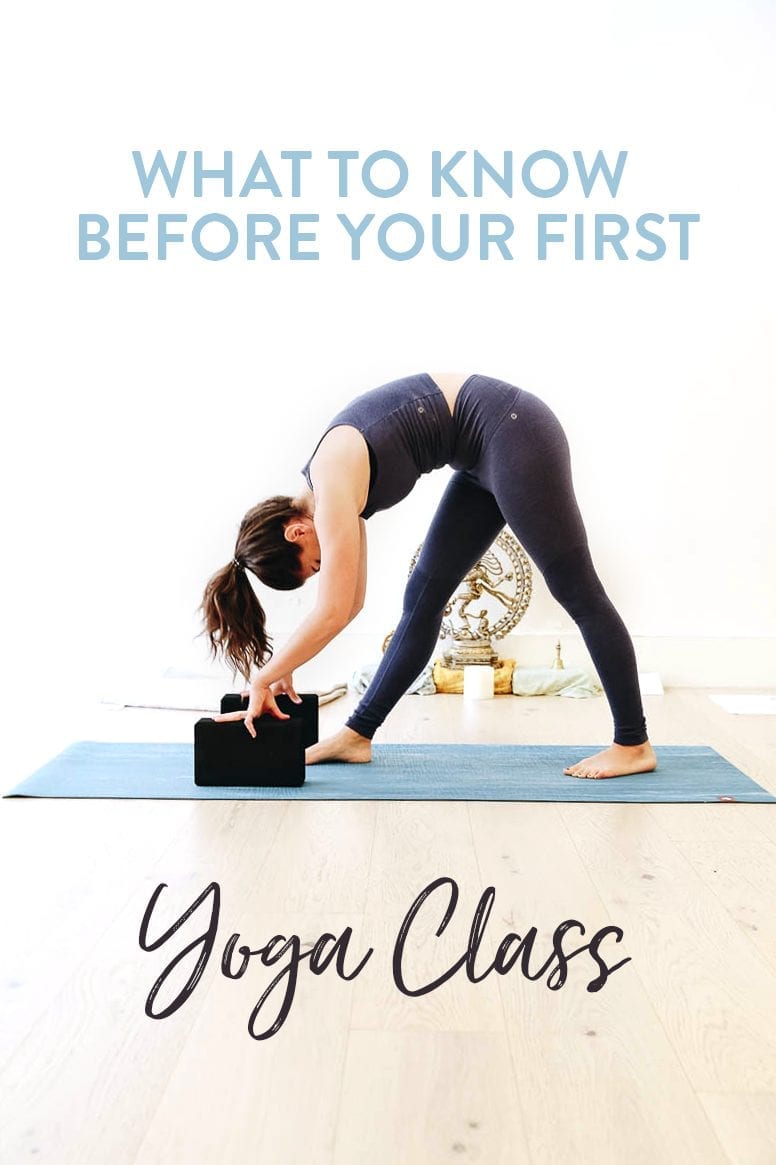
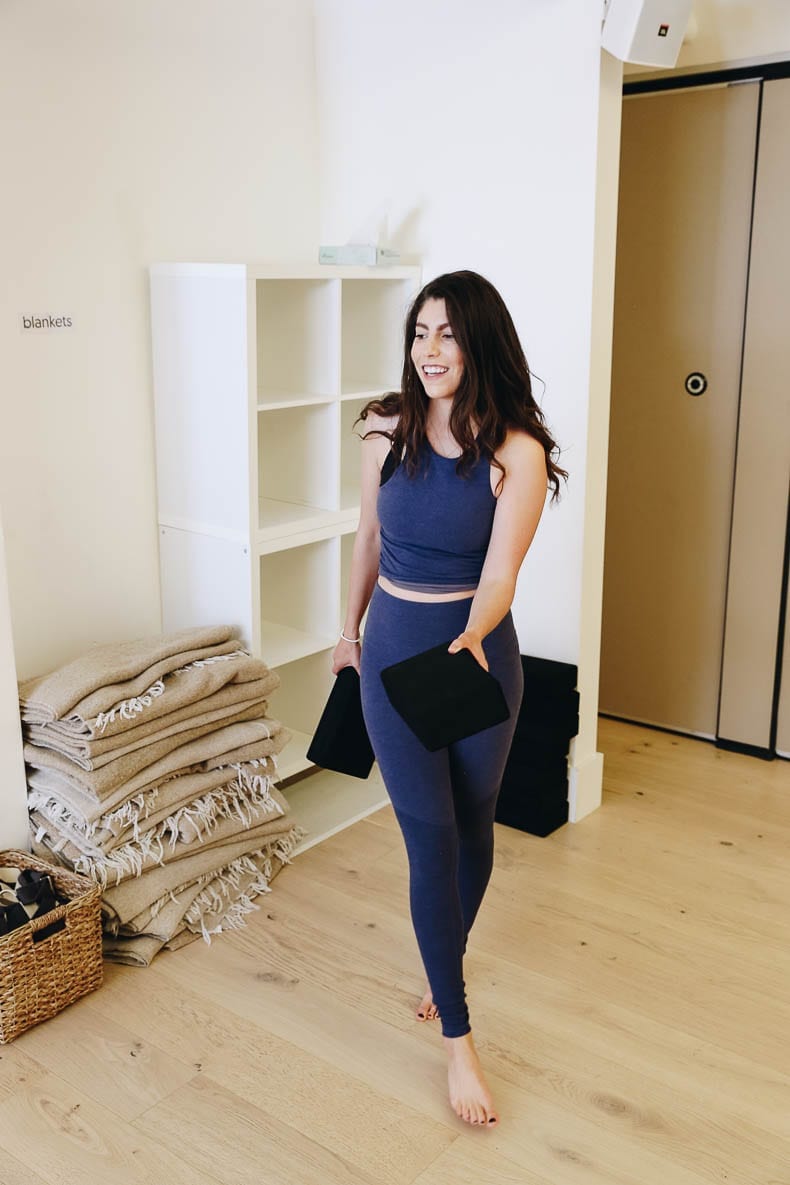
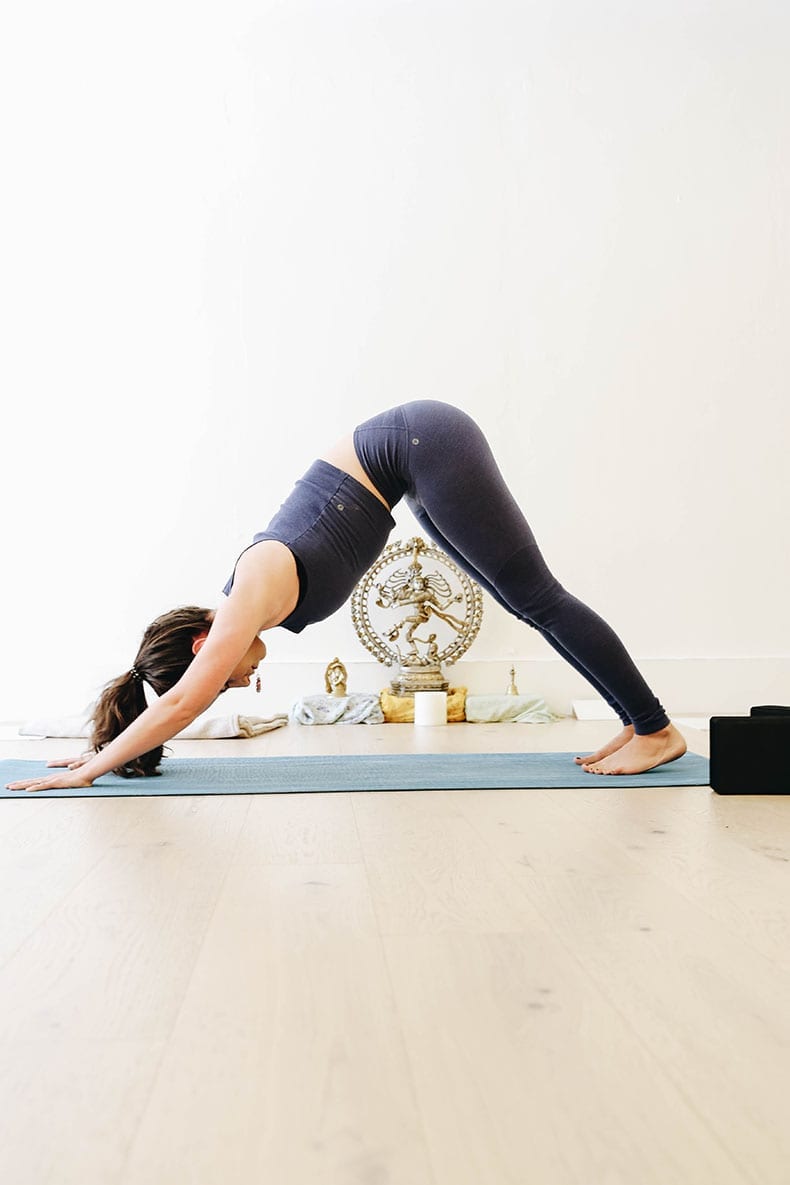
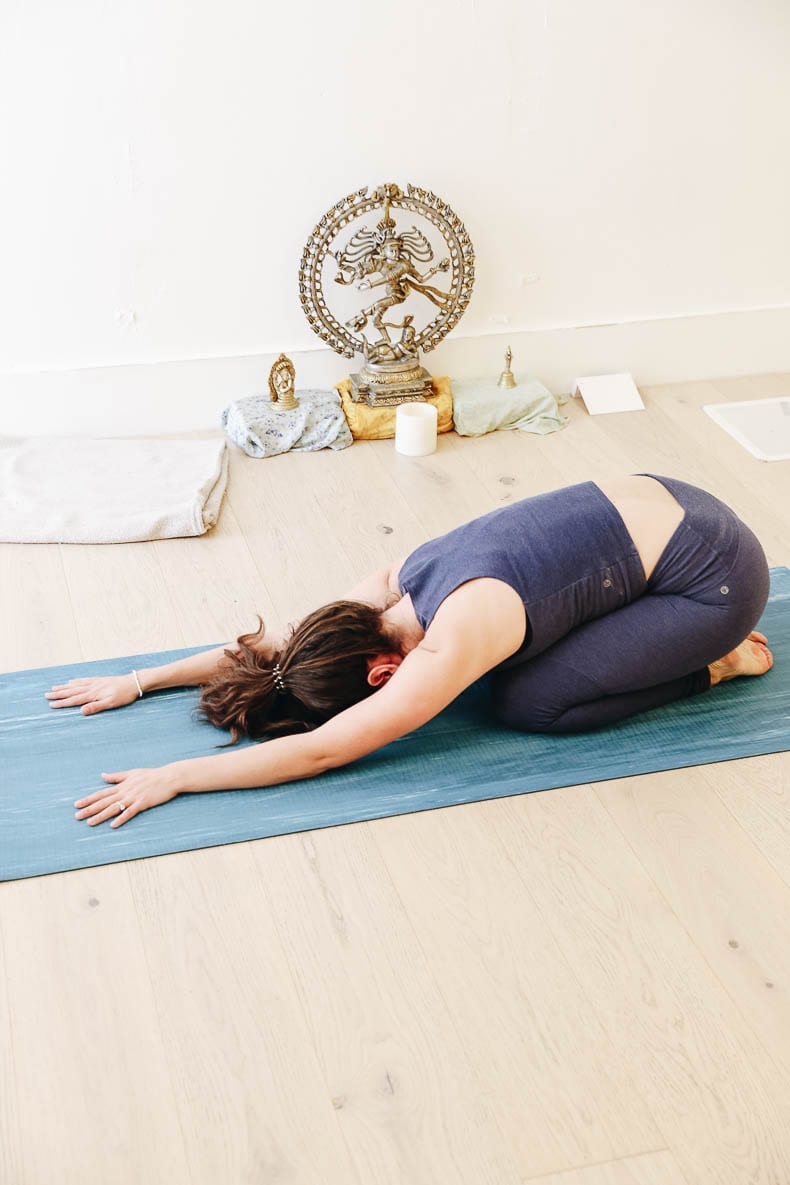
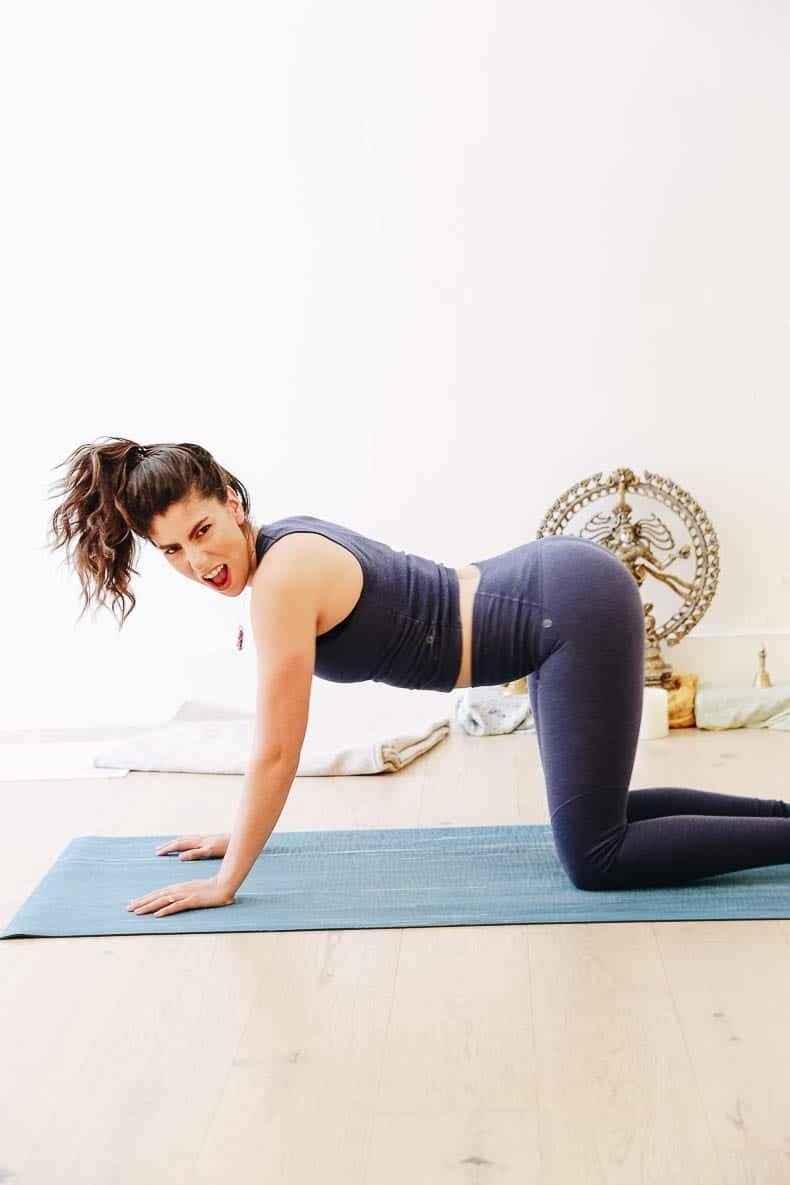
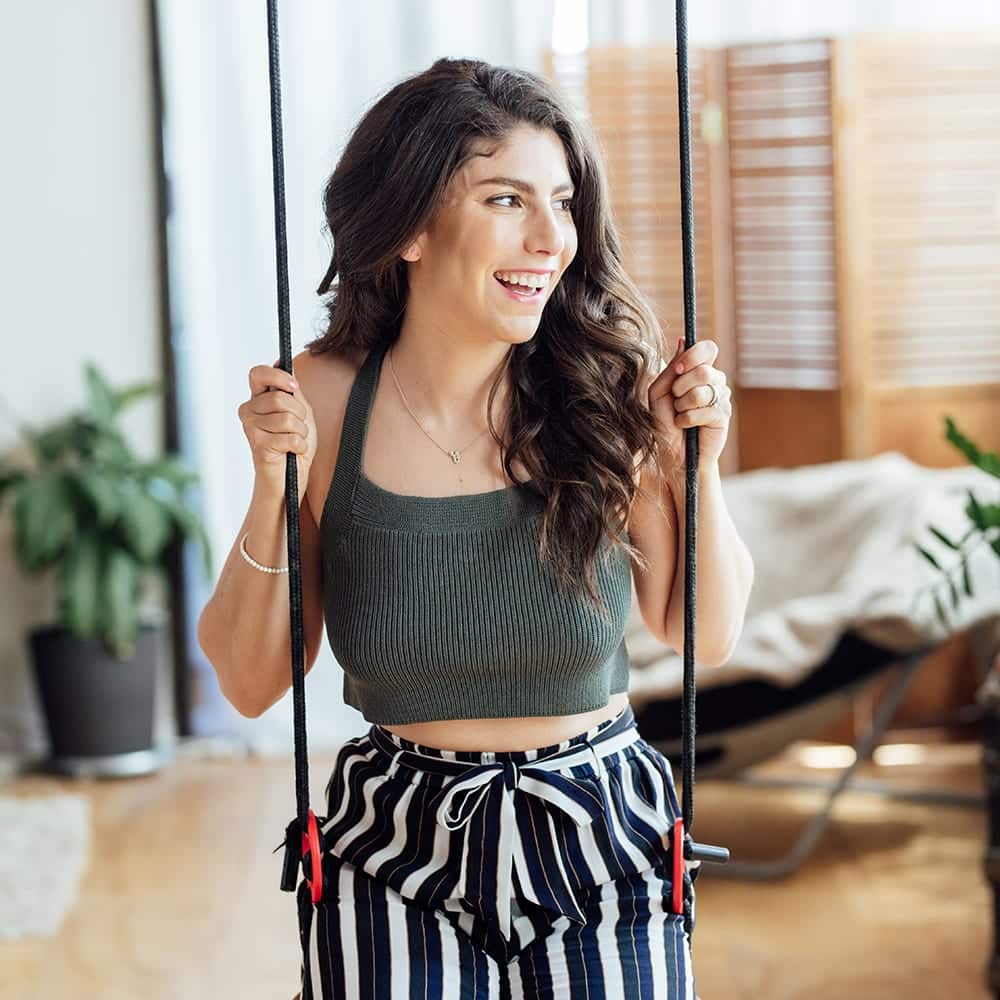
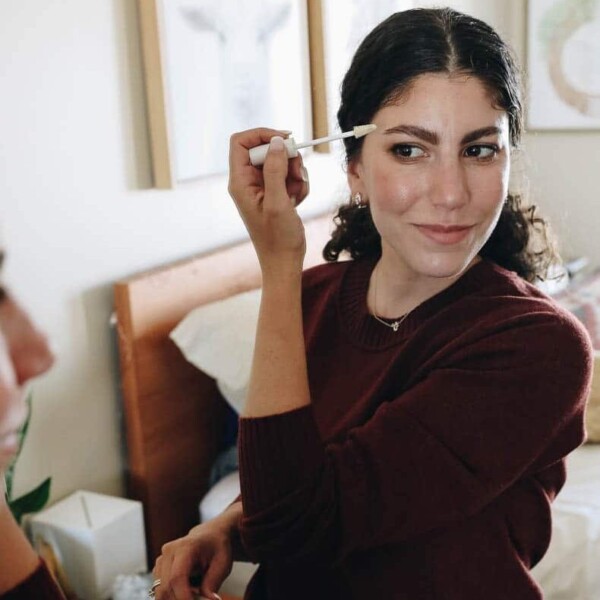








Hi Davida!
It’s really humbling to remember where we started, what we’ve been through to appreciate what we are or we have now. It is also nice to share those beginning stories with others to let them know that they are not going to stay there forever, if they really want to achieve something they have to work for it. It’s not to force them do the things they don’t want to do, but to inspire them and let them decide whatever they want to achieve, and for them to know that before we became a yoga teacher, we were once a beginner too.
-Mindy
I have been thinking about doing yoga classes to increase flexibility. I think that this would help with the flexibility that I have. It is good to know before I start that the instructor will move me to adjust me.
Yoga is one of the trendiest practices for the betterment of our mental and spiritual self. And why not it offers numerous benefits. It helps a person to overcome life’s hurdles and to move forward from the limitations of the body. Thanks for the useful info.
Love this post! I am a yoga teacher and I would recommend that people read this post if they have any insecurities about attending their first yoga class. I would add a few more points:
1. You do not need to do anything that makes you feel bad/in pain/ or not right.: Teachers can be a little zealous and new students are still building confidence. Your teacher is a guide not a drill seargent, make sure you listen to your body and take care of yourself.
2. It should not be painful. If you feel pain stop. Pain is accute while slight discomfort feels likes you are stretched a little out of your comfort zone.
3. Just because you can twist into a pretzel does not make you a good yogi
4. A handstand is not the goal of yoga.
5. None of the good/experienced yogis think badly of you as a beginner. In fact, they were once you and they probably feel happy that you’re joining the club!